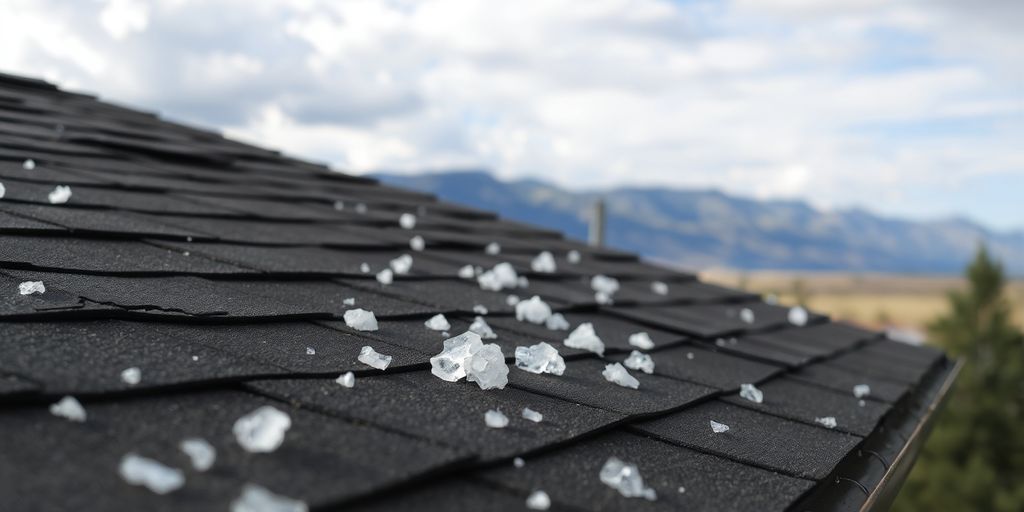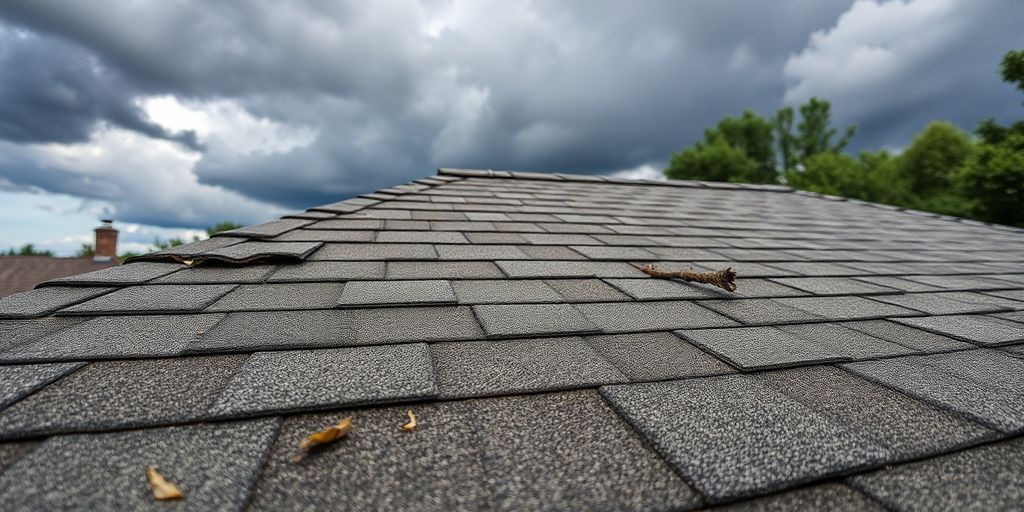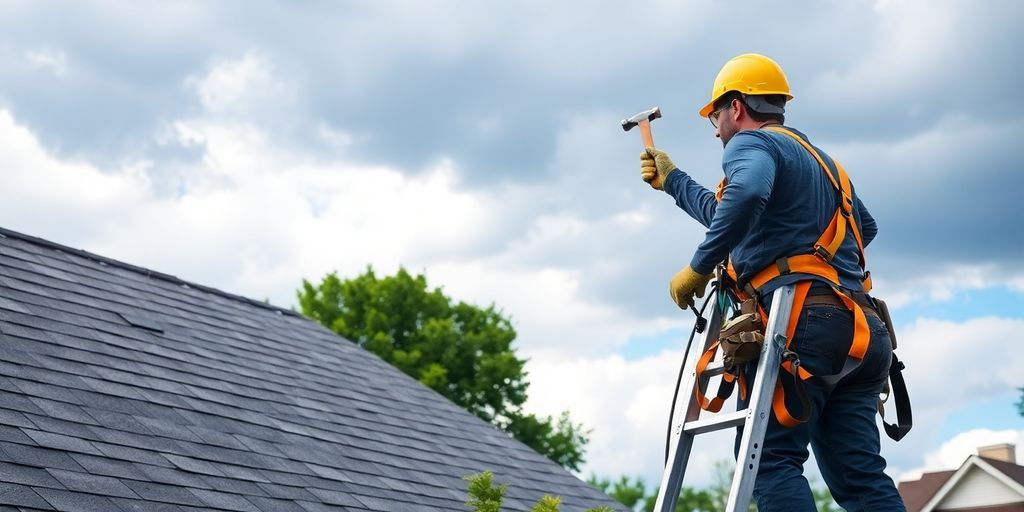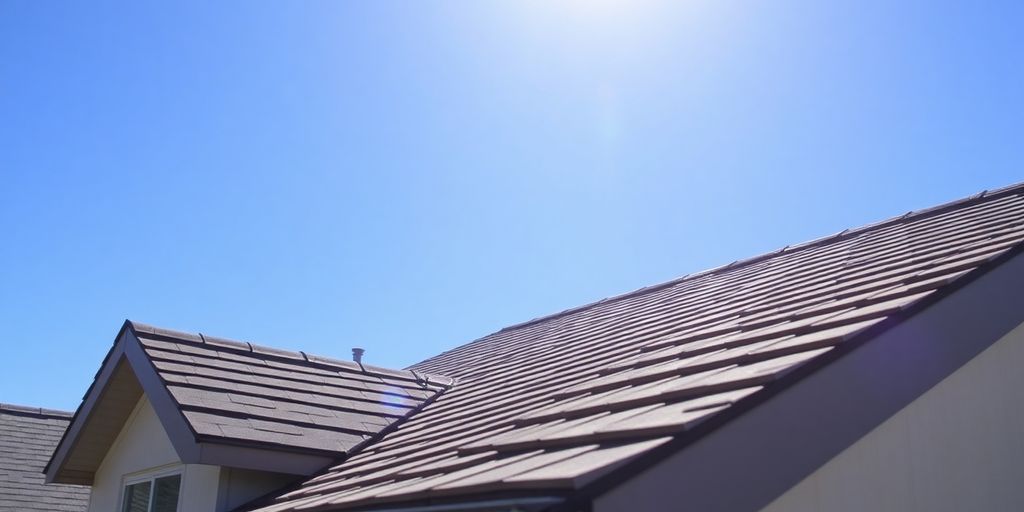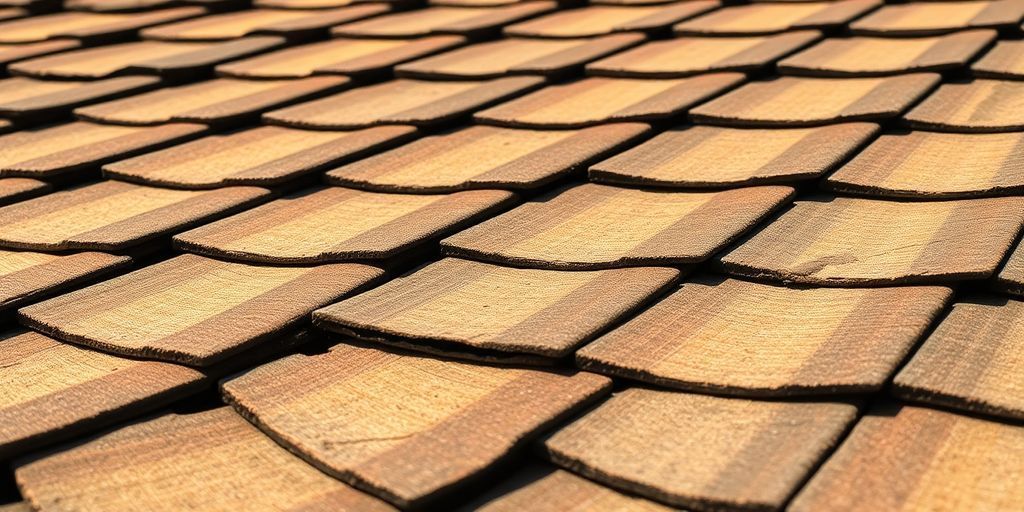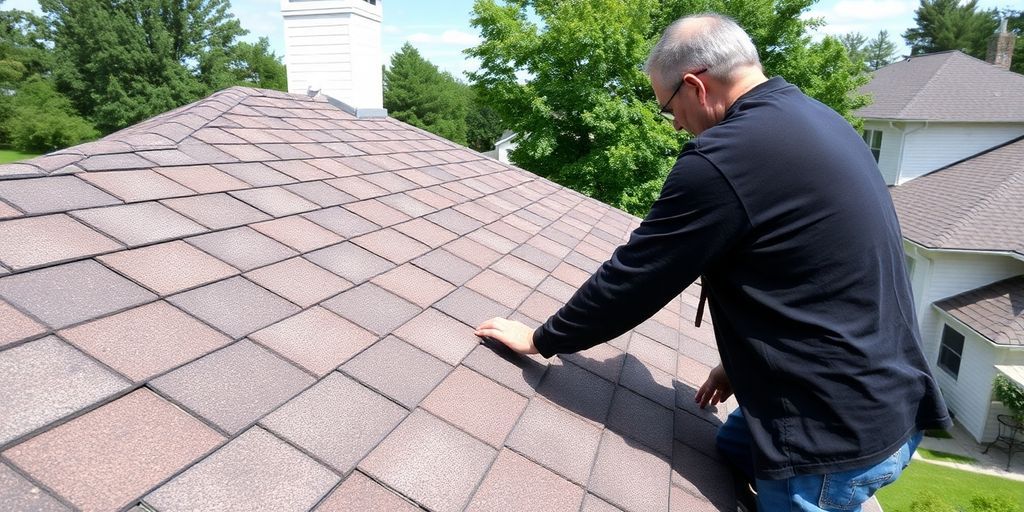How to Spot Wind Damage on Your Roof
After a strong storm, we often wonder about the state of our roofs. Wind can cause a surprising amount of damage, sometimes in ways that aren't immediately obvious. We need to know how to spot these issues to keep our homes safe and sound. This guide will help us with roof wind damage detection.
Key Takeaways
- Look closely at your shingles for any signs of lifting, curling, or missing pieces.
- Check for loose granules in your gutters or around your home, which indicates shingle wear.
- Inspect gutters, downspouts, and siding for any damage or signs of impact from wind-blown debris.
Identifying Common Signs of Roof Wind Damage
After a strong storm passes through, it's a good idea to take a look at your roof. We often don't think about it until something goes wrong, but wind can do a surprising amount of damage. Catching these issues early can save you a lot of trouble down the road.
Examining Shingle Condition
When we inspect our roofs for wind damage, the first thing we check is the condition of the shingles. Wind can lift shingles, crack them, or even tear them off completely. Look for shingles that are curling up at the edges, or those that seem to be lifting away from the roof deck. Sometimes, you might see shingles that are bent or creased, which is a sign they've been stressed by the wind. If you notice any shingles that are missing, that's a pretty clear indicator of wind impact.
Checking for Debris and Granule Loss
Another common sign is granule loss. Asphalt shingles have tiny granules on their surface that protect them from the sun. Wind can dislodge these granules, and you'll often find them collected in your gutters or downspouts. If you see a lot of these granules, it means your shingles are wearing down faster than they should. Also, keep an eye out for any debris that might have blown onto your roof, like branches or leaves. While not direct damage, these can sometimes get caught under shingles and cause problems or indicate areas where the wind was strong enough to move things around.
It's easy to overlook the roof after a storm, but a quick visual check can tell you a lot about its health. We want to make sure everything is secure and protected.
Advanced Roof Wind Damage Detection Techniques
Beyond the shingles themselves, we need to look at other parts of the roof system. Wind can cause damage that isn't immediately obvious on the shingles. We'll walk you through how to check these areas.
Inspecting Gutters and Downspouts
Gutters and downspouts are often the first things to take a beating from strong winds. They stick out from the roofline, making them vulnerable. When we inspect them, we're looking for a few key things. First, are they still attached securely? Loose or completely detached gutters are a clear sign of wind impact. We also check for dents or bends, which can happen if debris was blown into them or if they were hit directly. Pay attention to the seams where sections of the gutter connect; wind can pry these apart. If you see any sagging, that's another indicator that the fasteners might be failing due to wind stress. Even small amounts of damage here can lead to water pooling, which can cause further problems down the line.
Looking for Structural Compromises
This is where we get into the more serious potential issues. Wind can sometimes lift or shift roof decking, the plywood or OSB sheets that form the base of your roof. We need to check for any signs of this. Look for areas where the roof might seem uneven or where there are new gaps between the decking panels. Sometimes, you might notice nail pops, where nails are pushed up through the decking or shingles. This can happen when the decking shifts. Another thing to watch for is any damage to the fascia boards, the boards that run along the edge of the roof where the gutters are attached. If these are cracked, split, or pulled away, it suggests significant wind force was applied. A compromised roof structure means your home is not protected as it should be.
It's important to remember that even if the visible damage seems minor, wind can weaken the connections between different roof components over time. Regular checks are key to catching these issues before they become major problems.
Final Thoughts on Roof Care
So, we've gone over what to look for after a storm. Checking your roof isn't the most fun task, we know. But taking a little time to spot potential wind damage can save us a lot of trouble down the road. If you see anything that looks off, like missing shingles or dents, it's best to get a professional to take a look. They have the right gear and know-how to really assess the situation and make any needed repairs. Keeping our roofs in good shape means our homes stay safe and sound, no matter what the weather throws at us.
Frequently Asked Questions
What are the first things we should check for wind damage on our roof?
We should look for shingles that are bent, cracked, or missing altogether. Sometimes, you might see an area on the roof where shingles look like they've been lifted or torn away. It's also a good idea to check if there's a lot of shingle grit, which looks like coarse sand, in your gutters or around your house. This grit is actually the protective coating from your shingles, and losing too much means they're not doing their job as well.
Can wind damage our roof even if we don't see any missing shingles?
Yes, wind can cause hidden damage. Even if the shingles look okay from the ground, strong winds can loosen the seals that hold them down or even lift them slightly. This can create small gaps where water can get in later, leading to leaks and rot. We also need to consider if the wind has pushed any tree branches or other heavy items onto the roof, which could dent or puncture it.
Besides the shingles, what other parts of our roof and house should we examine after a strong wind?
We should inspect our gutters and downspouts for any dents, bends, or if they've pulled away from the house. If they're not attached properly, they can't direct water away from our foundation, which is bad. We should also look for any signs that the roof structure itself might be weak, like sagging areas or cracks in the fascia boards (the boards along the edge of the roof). These could mean the wind has done more than just affect the shingles.
Recent Posts

